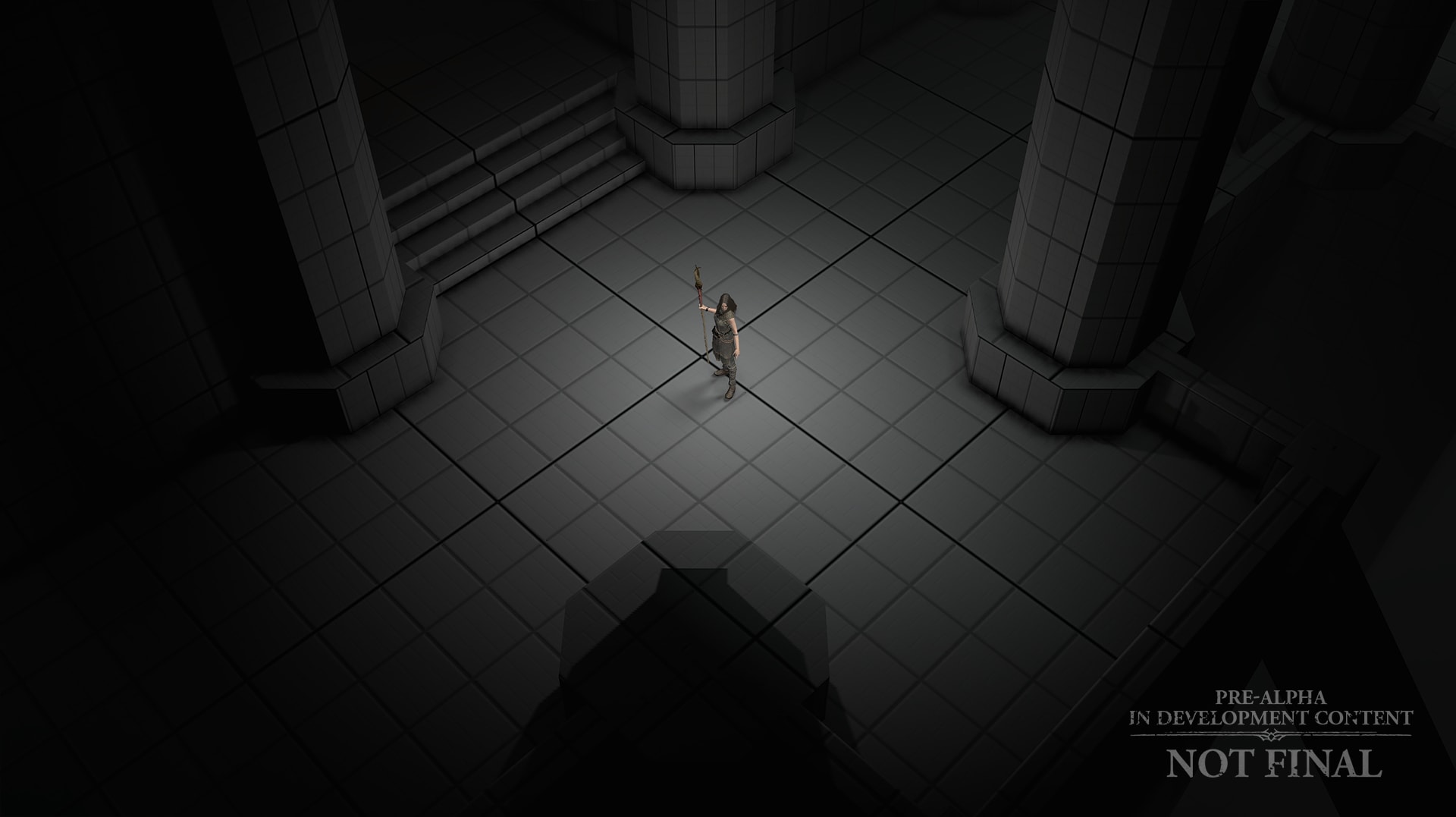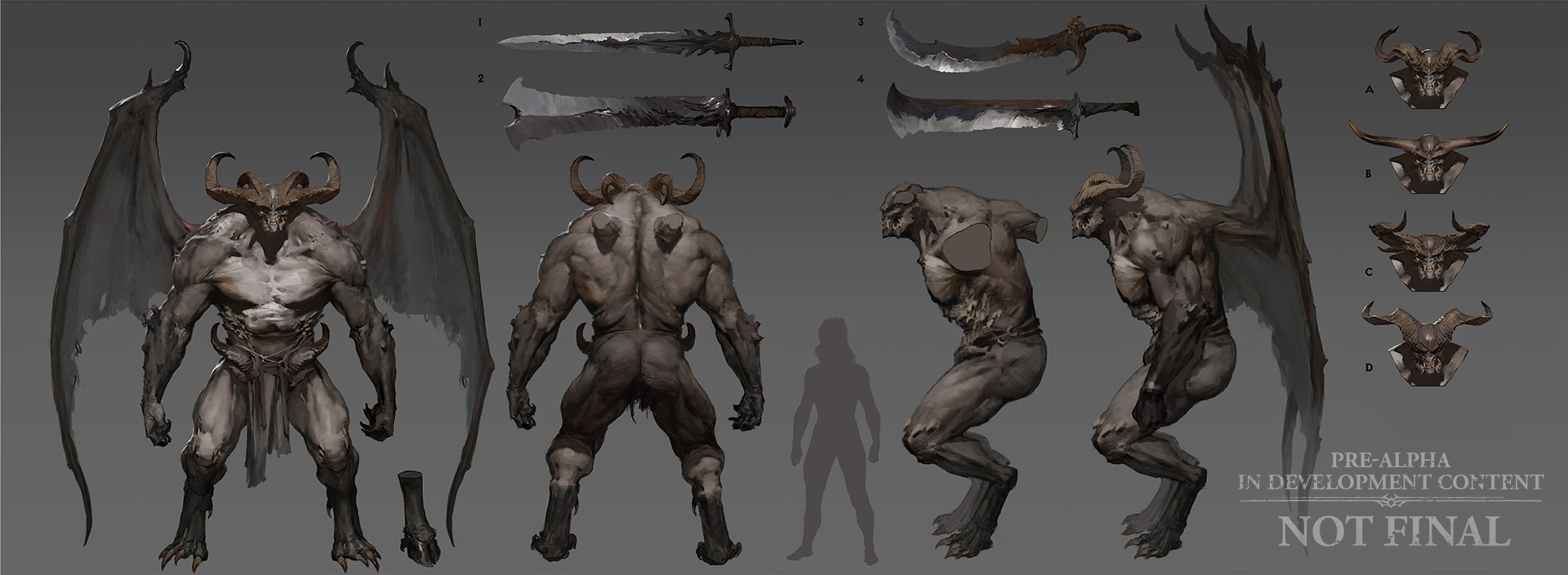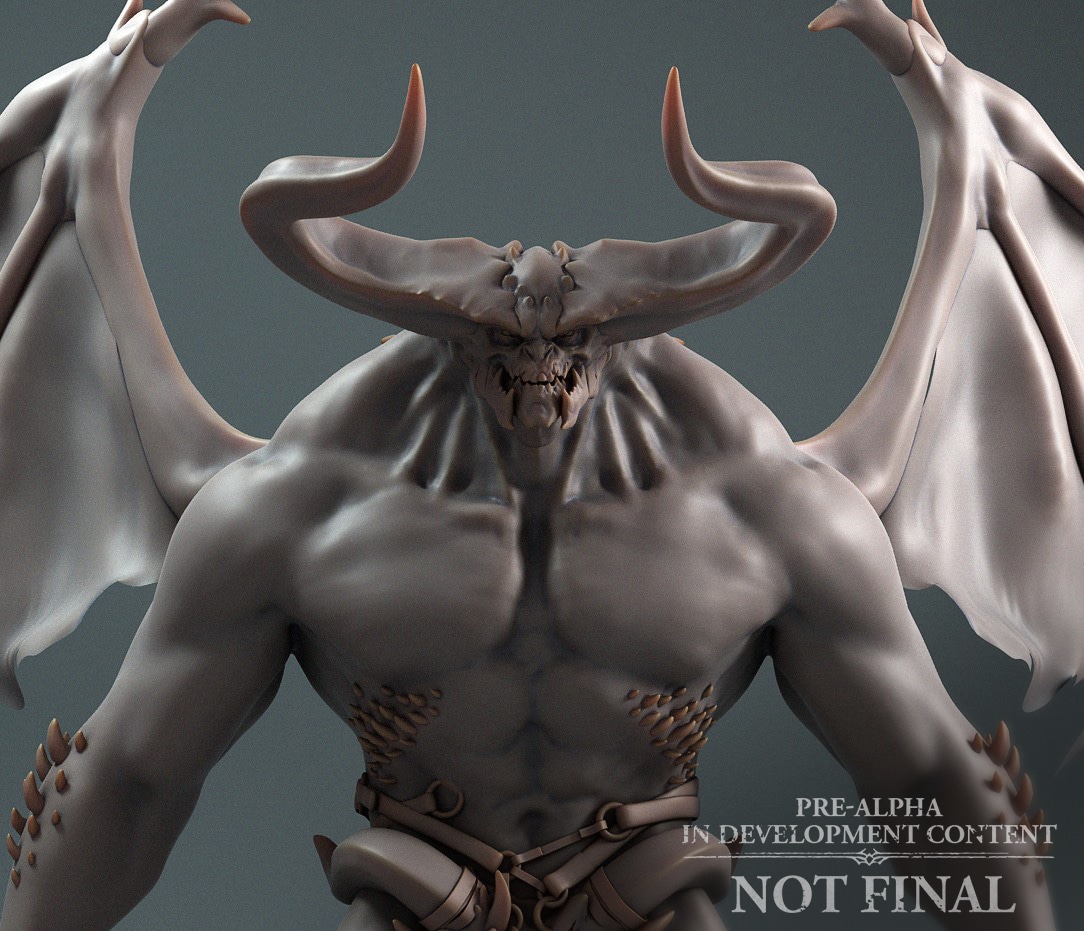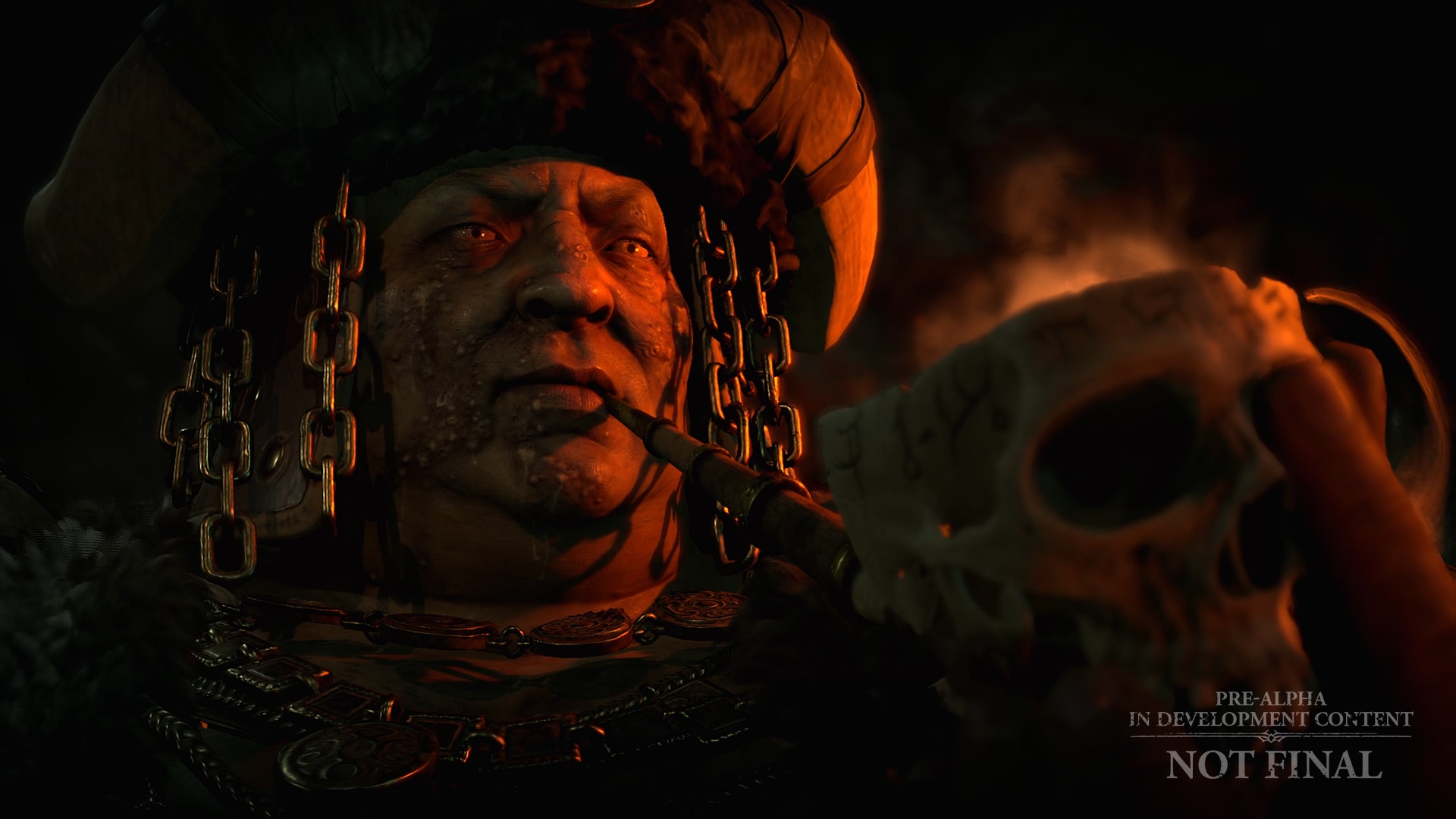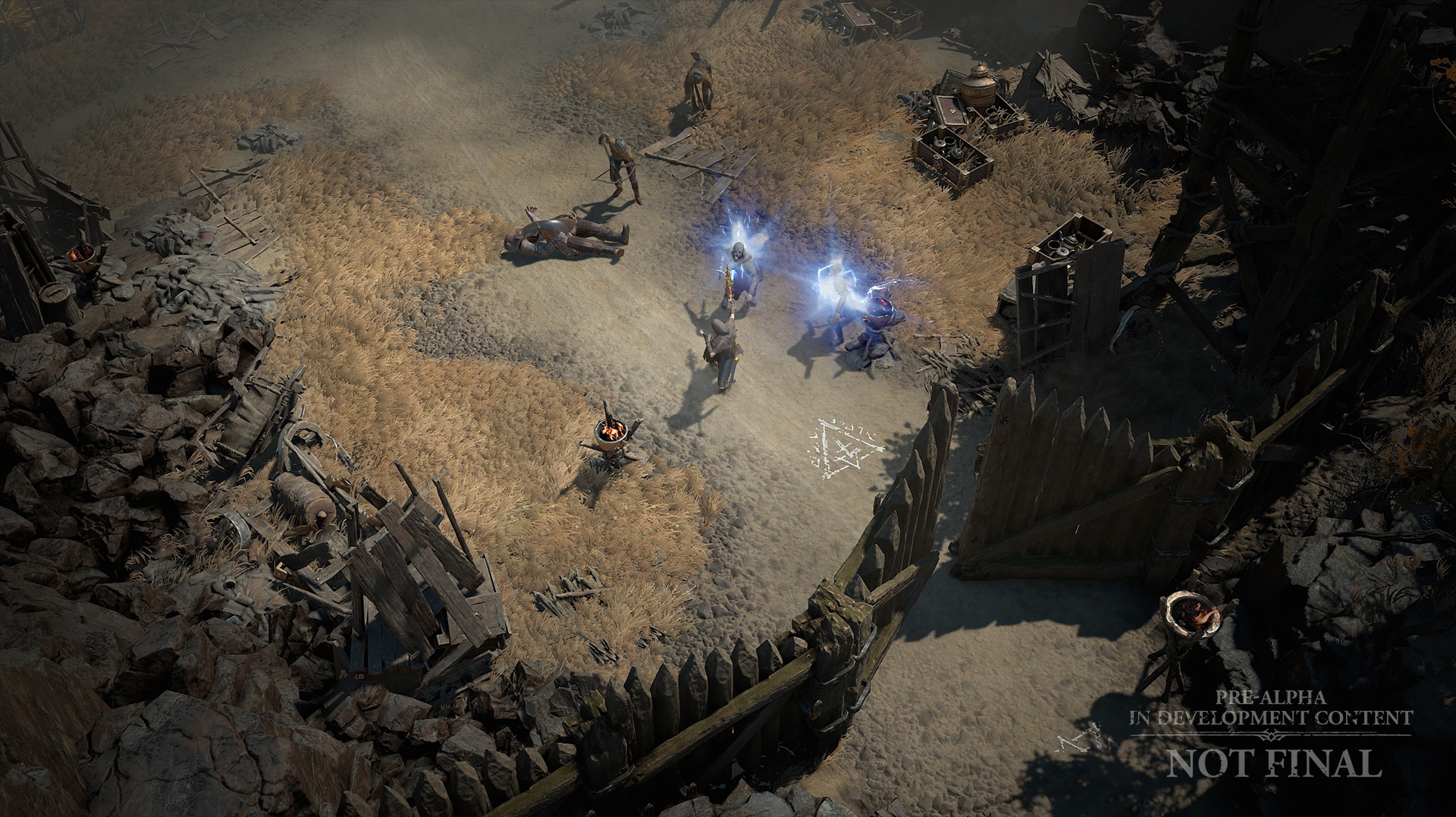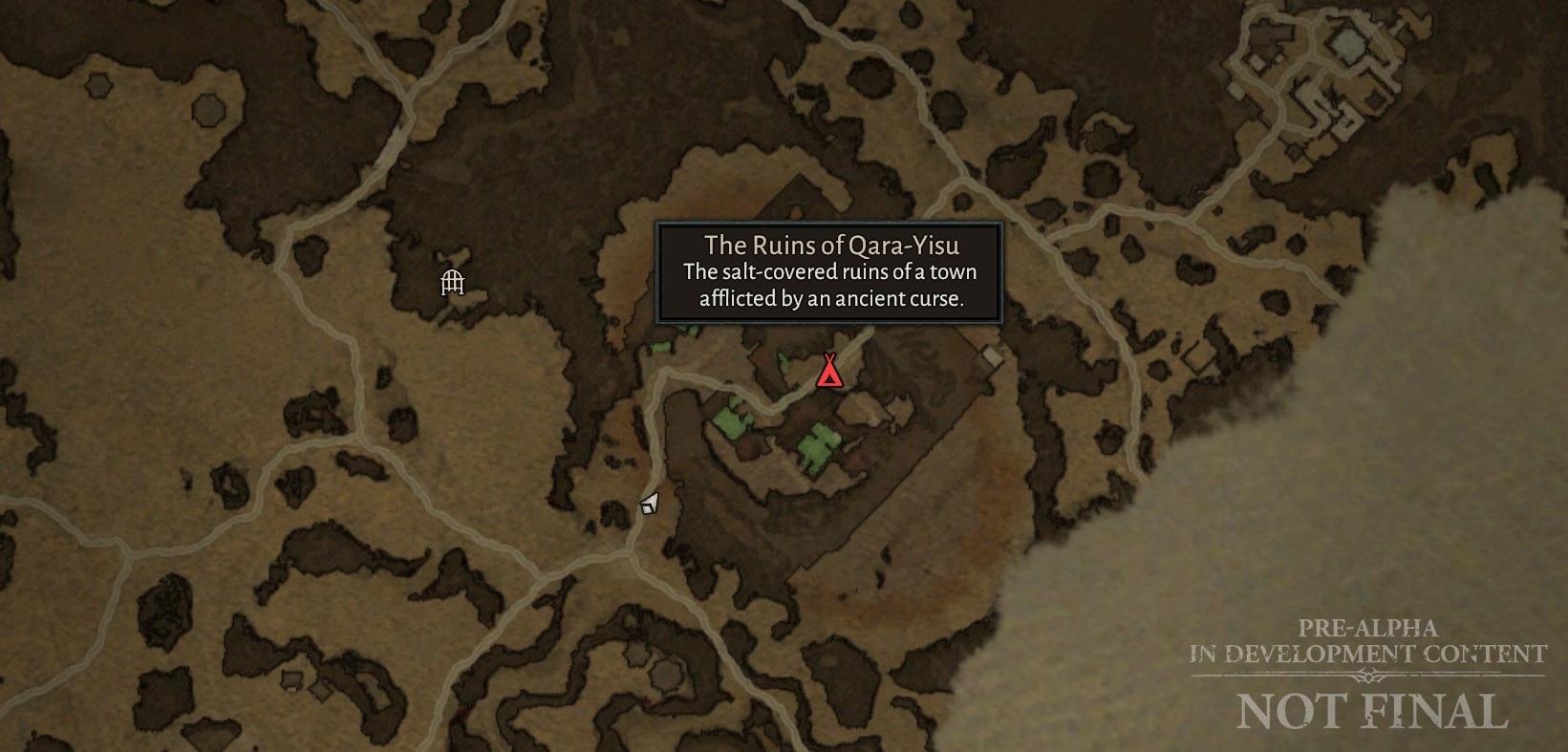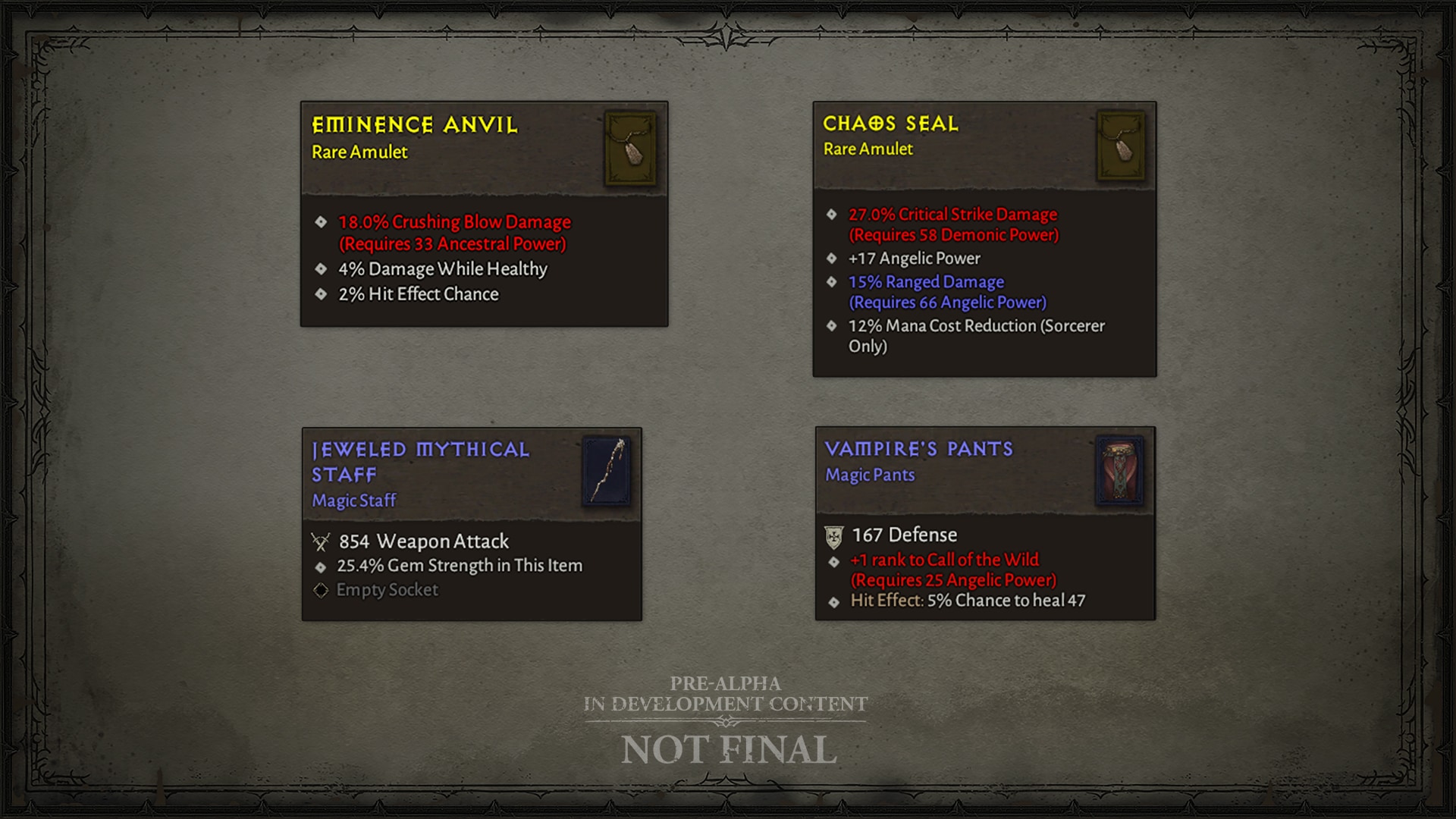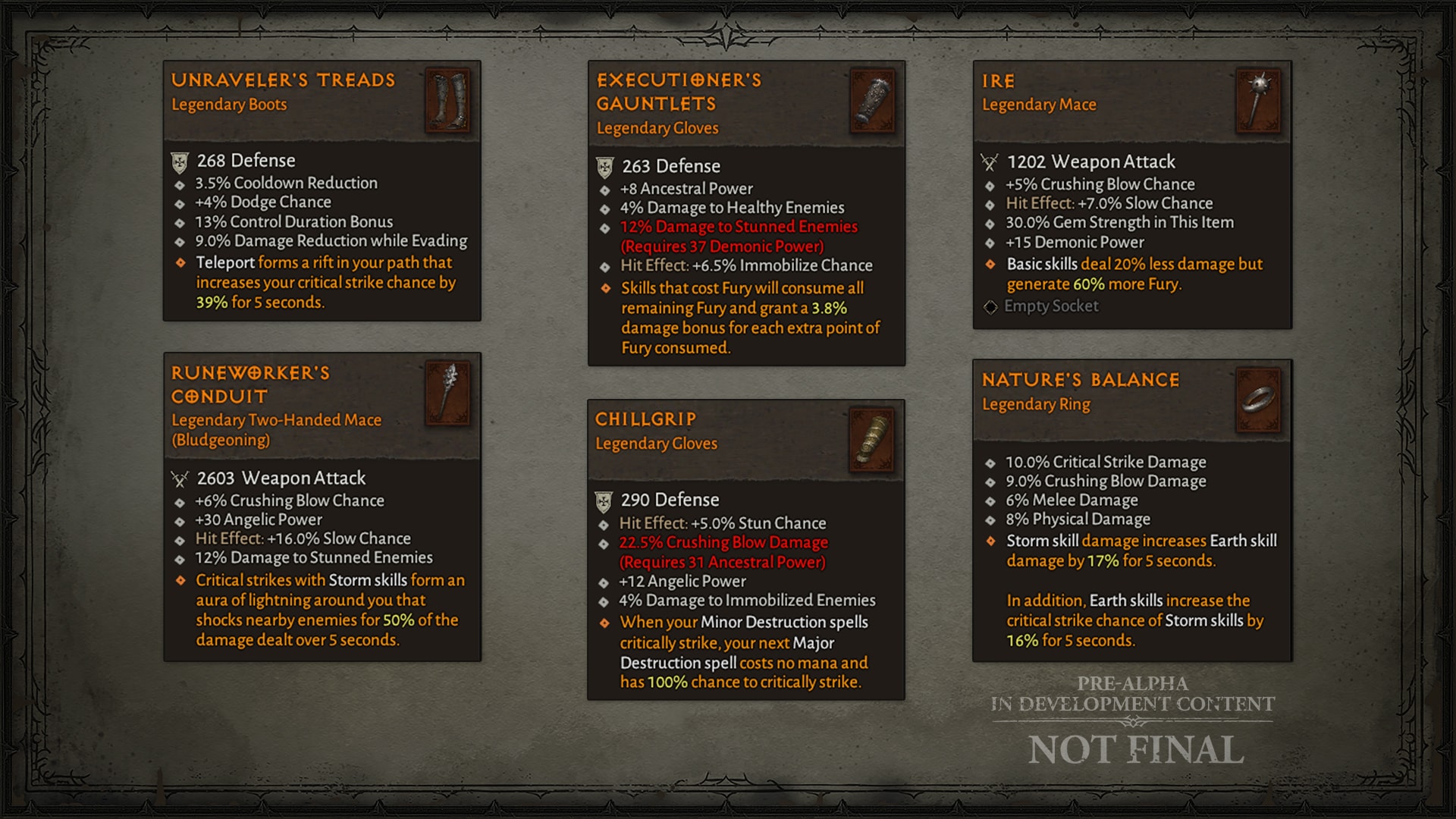Diablo IV Quarterly Update—June 2020
To the Diablo Community,
Hello, and welcome to our latest Diablo IV quarterly update! We are excited to share some of the progress we’ve made on the game today.
As is the case with many other game and technology companies at the time of writing this, the Diablo IV team has fully transitioned to working from home. While the transition has introduced challenges, we feel very fortunate to be able to keep momentum going strong on the development of Diablo IV.
Team Playtest
As with many other games, we organize the development of Diablo IV around team milestones. Often, these culminate with a build which we play together and talk about as a team. For example, the milestones leading up to BlizzCon 2019 culminated in a team playtest of the demo that helped us unveil the game during the show. Besides getting an early look at what other team members had accomplished, this also allowed us to stress test the demo, catch additional bugs, and make improvements before the show.
For our most recent milestone, we focused on blocking in all the elements in a region known as the Dry Steppes, complete with campaign content, open world elements, itemization, a PvP subzone, dungeons, and a cinematic to cap the completion of the region’s narrative. Our goal was to then have the team play the game from home over the course of two full days, and then spend some time analyzing data and discussing our reactions.
Of course, we play the game all the time, but we’re often examining individual features or areas. Taking the time to play the same build together as a team over multiple days gives us a different perspective. It lets us see how all the current features harmonize over a longer playtime. We had this as a goal before we knew we were going to move to a work from home environment, but as it turned out, it ended up being a really good way to reconnect as a team. Similarly, we hope that chatting about this playtest and sharing some screenshots with you will provide context for future blog updates (or pique your curiosity about future topics).
It’s worth noting that the playtest also didn’t represent the entirety of our progress. Other regions of the game are underway. The Dry Steppes is just the region where we made a concerted push to create a complete and cohesive experience that we could draw observations from. Let us know if you liked this approach to the blog (or if you didn’t) and we can adjust future updates accordingly. As always, your feedback is highly appreciated.
A Word About Blockout
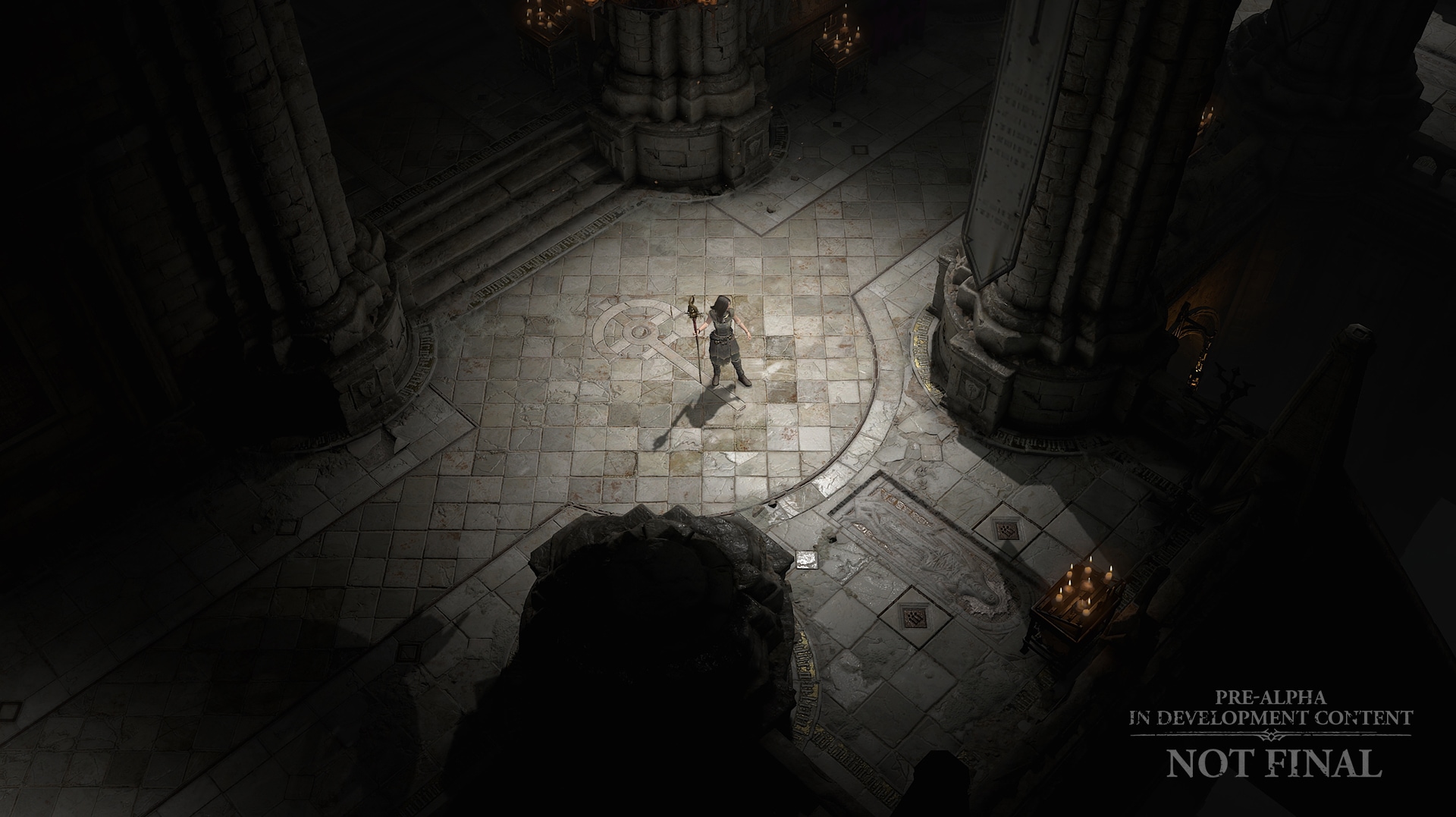
Blocking out or “grayboxing” levels allows us to play areas where the art isn’t finished.
As part of development, visuals are often kept in rough form so the game team can cheaply test ideas and iterate on them. If something isn’t fun, it’s much cheaper to change or discard a “blockout” asset than a final one.
When we share models or screenshots with you, they are often quite far along to adequately convey our vision for the game. We don’t typically show blockout assets as they don’t really do justice to the engine or the artistry of the folks on the team, but as part of showing the “behind the scenes” of how we make the game, we thought you’d appreciate seeing the transition of blockout assets into more polished ones.
Some of the assets shown in this blog might not be final, so please bear that in mind as you check the screenshots below.
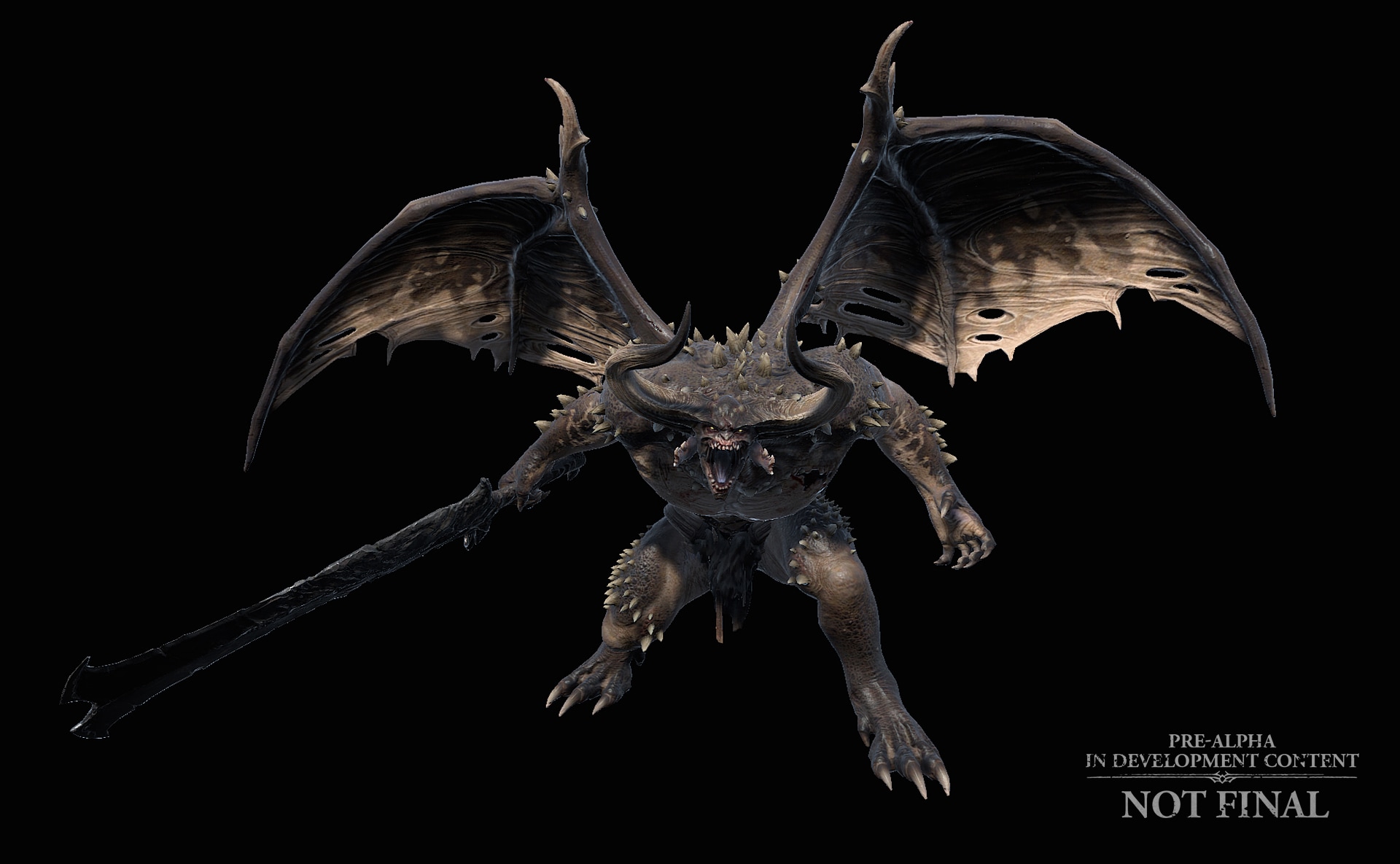
A classic demon from concept, to blockout, to in-game art
Storytelling
A couple of things have evolved with how we deliver story in Diablo IV. First, we have conversations. In D3 we relied on UI panes with a character’s name and portrait. We’re experimenting with a mix of tool-generated and manually choreographed cameras to tackle conversations. For simple interactions with NPCs we bring the camera in closer to the characters (while still maintaining an overall isometric feel) and use a library of animations to deliver the general gist of the conversations. For more complex conversations, we take a similar camera approach but here the character’s movements and animations are more deliberately hand-crafted. This lets us deliver story moments that are complex while keeping you in the world as much as possible. Here’s a shot from one such interaction.
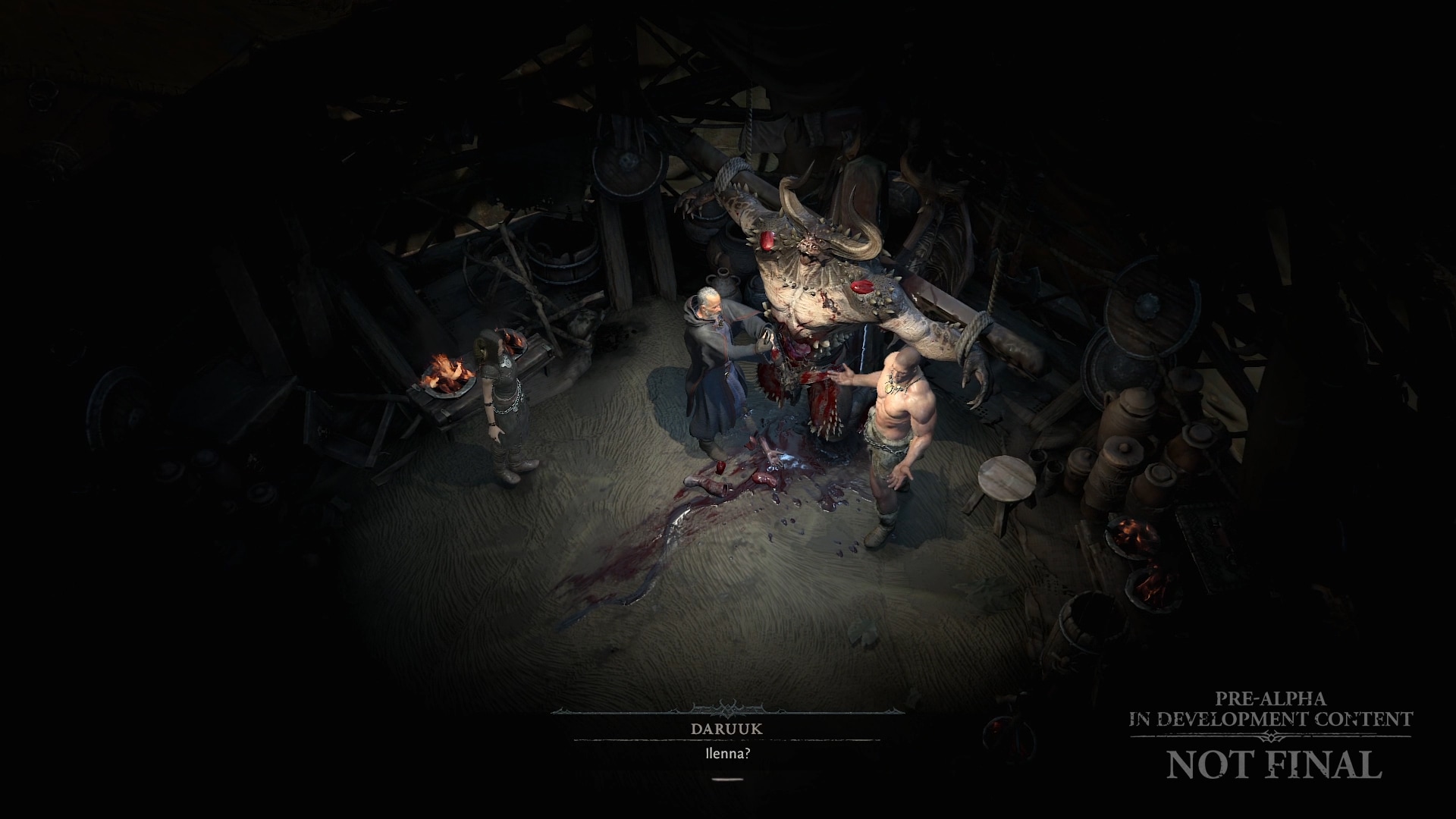
A more zoomed in overhead camera helps us deliver simple story beats.
The second storytelling method we are developing is real-time cutscenes (or RTCs). Here we grab your camera and treat the storytelling more like a movie, so we’re reserving this technique for the most important story moments. Having these be real-time has great advantages—we can show your character with their currently equipped armor as part of the scene, for example. But we can also display them at your current resolution and with your currently enabled graphics settings, so they end up feeling more seamless and like a part of the game.
We showed you some early work on real time in-game cinematics during the BlizzCon demo. Our cinematics and engine teams have made a lot of improvements since then, so we were excited to see a fully produced cinematic serve as the climax to the Dry Steppes experience, and the team was not disappointed. Here’s a couple screengrabs that the story and cinematics folks have given us the go ahead to share with you as it shouldn’t spoil the details of what’s to come.
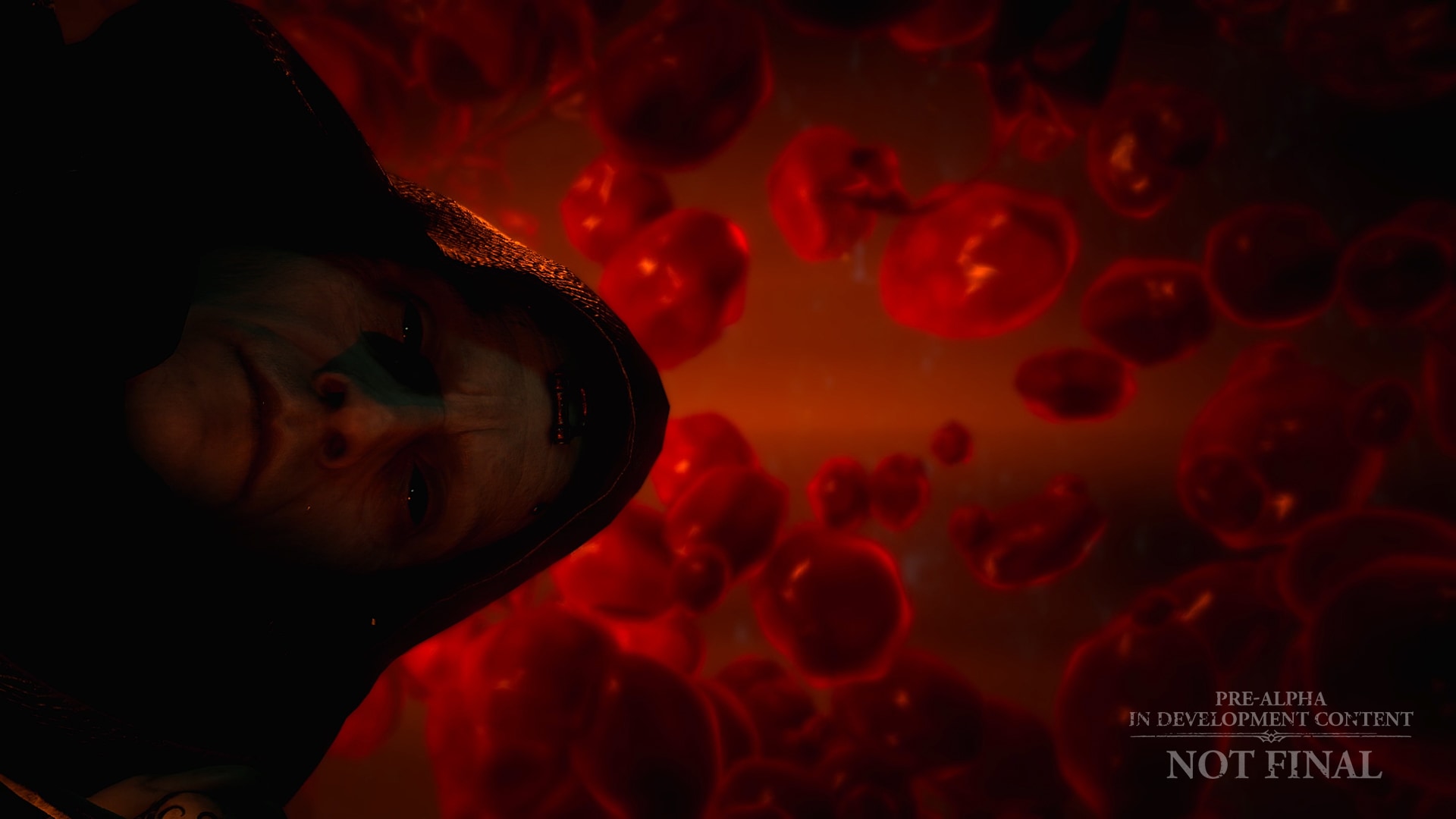
In-game cinematics in Diablo IV set a properly dark mood
Open World
One of the main new features we are bringing to the Diablo series is the open world of Sanctuary. So, while you can concentrate on the story campaign and work through that, we have a variety of open world systems and pieces of content that you are also discovering along the way. If you want to take a break from the main campaign and go exploring, crafting, or PvPing, you are free to do so.
During the playtest, we saw this variability in action quite a bit. On an average playthrough, team members took several hours to complete the campaign content for the region, but those who focused only on the story finished the arc in less than half the average time (and were, of course, able to do side content after that). We think the ability to approach the game with a different mix of story and side content tailored to your own appetite will make playing (and re-playing) the campaign more enjoyable than it has been in previous ARPGs.
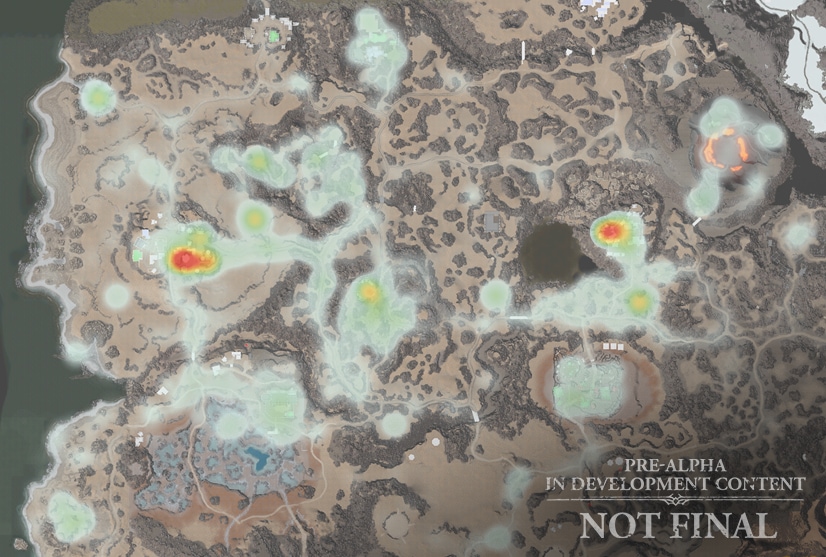
Playtests like this one allow us to collect and aggregate data to help guide our design.
This distribution heatmap indicates areas in the Dry Steppes that saw the most traffic.
While we have many open world activities, such as crafting, events, world PvP, and side quests, perhaps the most popular open world feature was Camps. These are locations of importance that have been overrun by enemies, which once cleansed turn into friendly outposts with NPCs and a waypoint location. While there is a backstory to each camp, most of the storytelling is visual and quests don’t directly send you to them. For example, one of the camps in the zone was a town afflicted by a curse that turned villagers into piles of salt. Another was a crypt, haunted by a spirit that possesses the bodies of various undead—jumping from skeleton to skeleton until you defeat him.
We really dug the impact of seeing the world change as you reclaim a small piece of Sanctuary and bring hope back to its common folk. We look forward to the Open World designers showing you more about this feature in the future!

Camps start out as hostile and turn into small hubs with a waypoint and vendors after being completed
Finally, mounts were another thing you could obtain during the playthrough. We really liked how the open world interacts with mounts—you could get to your objectives more quickly without trivializing travel or combat. Itemization for mounts also opened up a new axis of progression.
One of my favorite things about mounts was customizing it by attaching a trophy to the saddle to signal to other players that I had completed an obscure challenge in the zone. Of course, there is more work to be done on mounts. For example, on navigation and tuning, it is currently too easy to get stuck on stray pieces of collision or to get dismounted by a random enemy projectile. These are all things that are just going to get better the more we play and tune the feature.
Multiplayer
Fine tuning the right approach to multiplayer in Diablo IV has been challenging. Our goal has always been to incorporate elements from shared world games without the game ever feeling like it’s veering into massively multiplayer territory. To be clear, this is a philosophy rather than a tech limitation. We find that the game stops feeling like Diablo and the world feels less dangerous when you see other players too often or in too high numbers.
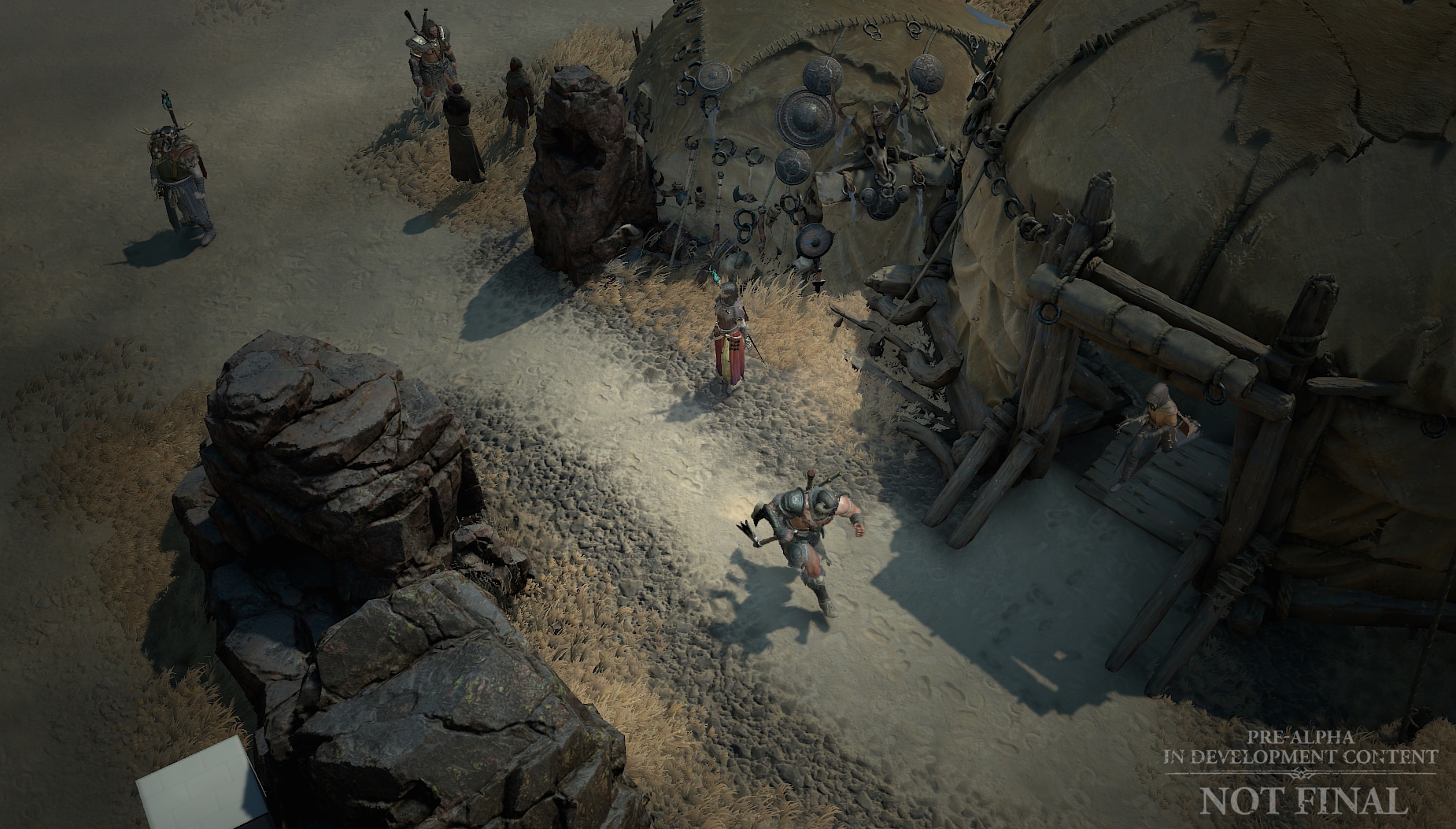
Towns become social hubs where you can run into other players once key segments in the story are completed
I’ll break down our experiences during the playtest with some examples. Dungeons and key story moments are always private—just the player and their party. Once story moments are complete and towns turned into social hubs, you’d run into a few people in town. While on the road, you’d sometimes run into a player here and there. And then finally, if you went to a location where a world event was happening, you would see a larger congregation of players trying to defend against an attack by a cannibal horde or trying to take down Ashava, the demonic world boss we showed at BlizzCon.
It’s worth calling out that while some coordination is helpful during these events, you are never forced to join a party. Solo players can walk in, help complete the event, and claim a reward. We think this seamless approach to multiplayer is working well and look forward to sharing more about this approach with you. In our tests so far, the world feels alive and dynamic without compromising the feel of Diablo. And for players that do want to party up against the minions of Hell, we have new tools available to find a group, whether by activity or proximity in the game world.
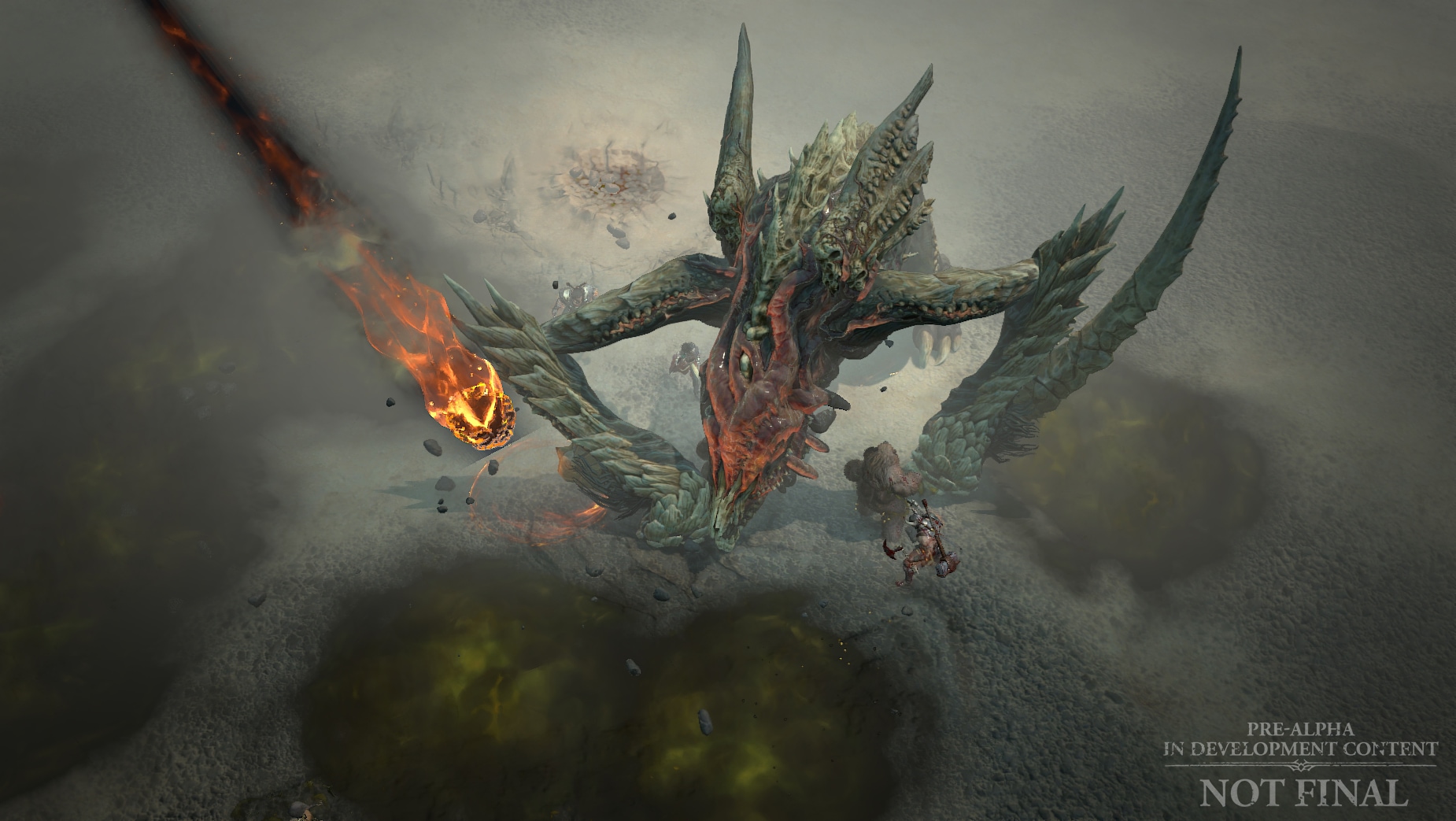
The World Boss Ashava shown during Blizzcon 2019 in Scosglen can spawn in the Dry Steppes as well
Items and Progression
One of the things that was very useful about our two-day playtest was that we could get better feedback on progression as there was a sense of permanence. Gear and skill choices you make on day one have an impact on day two (though some people chose to roll alts as we had multiple classes to test). A friend of mine used to say that Diablo is the game that you keep playing inside your head and Diablo IV is no different. In addition to the official play time allotted to the team during the playtest, I could feel the game lingering in my mind, thinking about the items that could possibly drop for my build, and talents I could finally unlock to get me those key skill interactions.
You might have already read the developer blog by David Kim shortly after last BlizzCon. In it, he describes new affixes and itemization philosophies. We’ll have a beefier update on items later in the year, but in the meantime, here are some items that dropped during the playtest to whet your appetite!
Various items from the playtest utilizing the new attribute system. Note that the item icons are not final art
Other Thoughts
The overall feedback from the team was that even at these early stages, Diablo IV is very fun to play. The classes especially are going down a promising path that we’re excited about. We’re taking cues from what makes the Barbarian’s Arsenal system or the Druid’s shapeshifting feel special and looking for ways to apply similar innovations to all classes (more on this in a future update).
The playtest was also a really good way to put our tech through its paces. Since we played at home, we got to test the game on a lot of different setups—from graphics cards, to screen aspect ratios, to network speeds. We also had the opportunity to exercise our client-server technology, including deploying builds with fixes to bugs during the playtest.
Of course, we still have a lot of work ahead of us and to be clear, we are not at an Alpha or Beta stage yet. We don’t typically discuss our early milestones publicly during the course of development, but we think it’s especially important to continue to share our progress during a year without a BlizzCon. Also, this was an important milestone for the team, as we feel it corroborated that we have all the key ingredients for a great Diablo IV (of course, we’ll continue to seek feedback and iterate as we drive to completion).
We hope you’ve enjoyed this update and, as always, we welcome you to share your thoughts on the platform of your choice—whether it’s our own forums, other sites, or social media, we read and appreciate your comments and feedback. We were happy to see lots of great discussion after our last blog (which seeded a bunch of conversations on our end as well).
We are also excited to see the range of topics you want to hear about. Based on your response so far, we think talent trees are by far what you’re the most eager to discuss, so we’ll make sure to queue that up for our very next blog. Items continue to be a popular topic and there was also a lot of interest in music. We are shooting to have more updates around those topics later in the year. Let us know how that sounds.
Thank you for taking the time to read this update. We can’t wait to share more of Sanctuary with you!
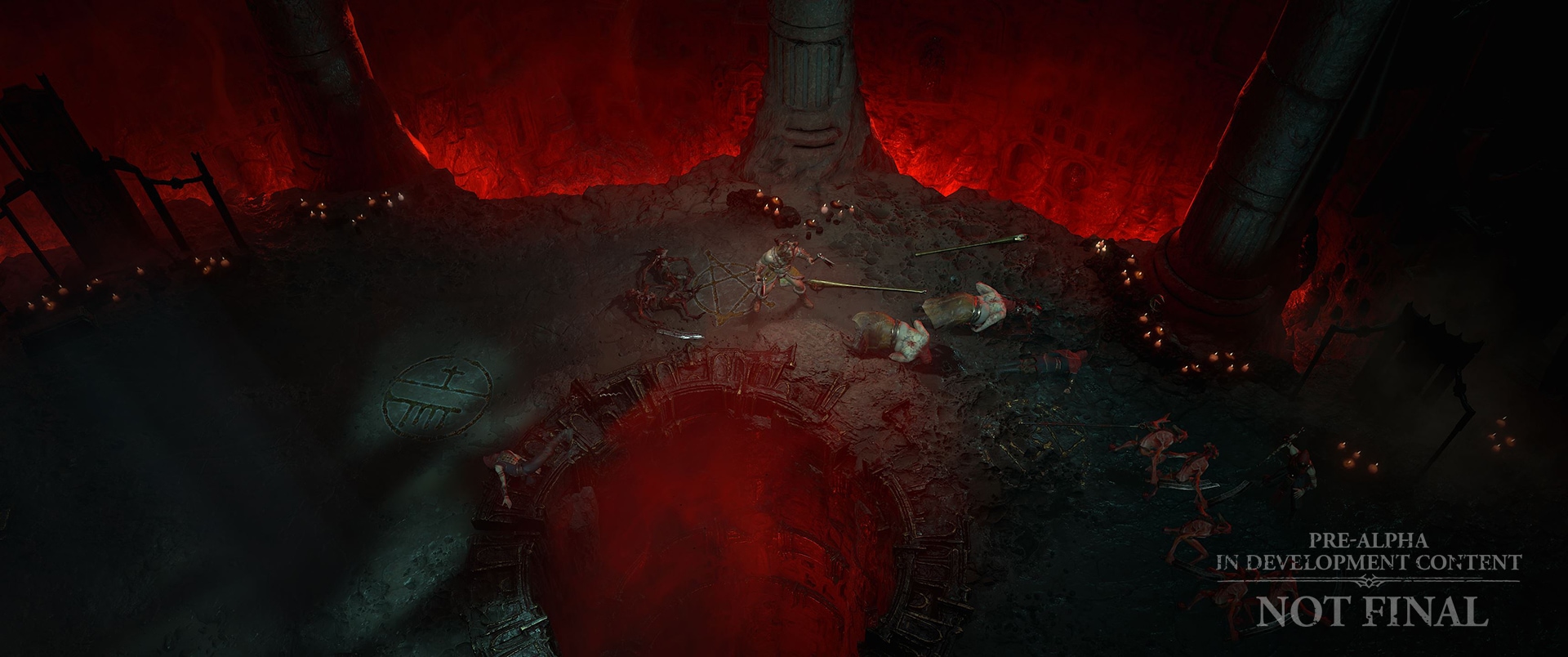
Development is well underway outside the Dry Steppes. More of Sanctuary awaits in coming updates!
-Luis Barriga-
Game Director, Diablo IV Team
Have a question, comment, or feedback about the information we shared today? Join the conversation here on our General Forum. We can’t wait to hear from you!
